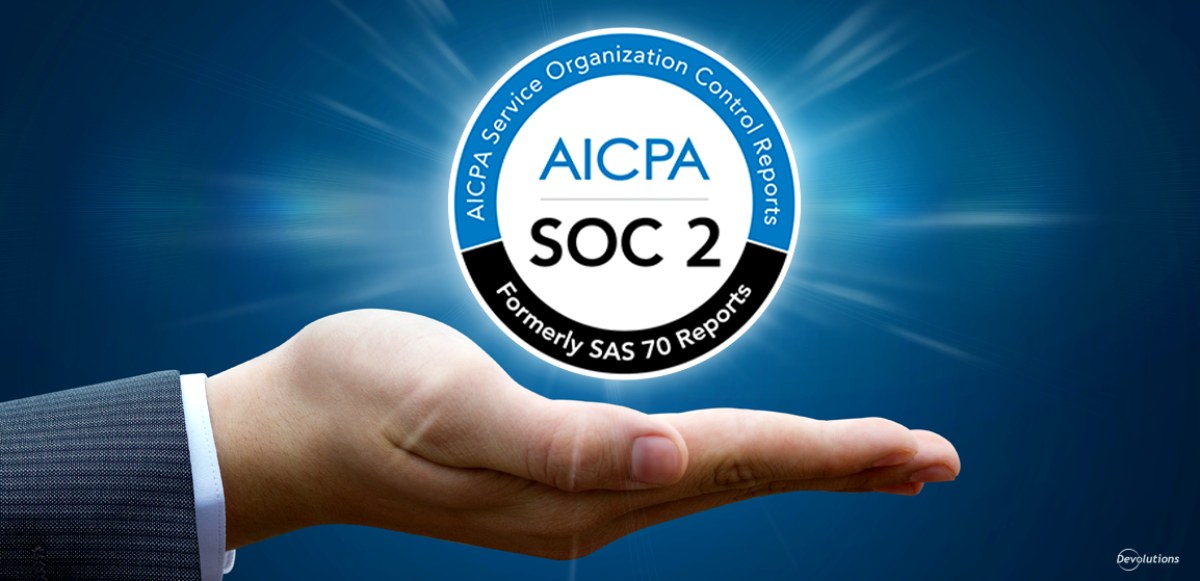In today’s environment, businesses are increasingly dependent on technology to run their operations, store their data & engage with their consumers. With this increased reliance on technology comes an increased need for strong security measures to protect sensitive information & prevent breaches. This is where SOC 2 Compliance comes in.
The American Institute of Certified Public Accountants [AICPA] developed SOC 2 Compliance, a set of Standards for data security & privacy. It is intended to assist businesses in ensuring the security of their data & systems, as well as the privacy of their customers’ information.
In this article, we will investigate why SOC 2 Compliance is so crucial for businesses, the benefits & the soc 2 certification cost. We will also discuss the difficulties that businesses may encounter when implementing SOC 2 Compliance & provide some best practices for maintaining compliance over time. You will have a better understanding of SOC 2 Compliance & its significance for your business by the end of this post.
Table of Contents
ToggleWhat is SOC 2 Compliance?
Service Organisation Control 2 [SOC 2] Compliance is a set of Auditing Standards published by the American Institute of Certified Public Accountants [AICPA]. It focuses on data security & privacy controls implemented by Service Providers (known as Service Organisations) to protect the data of their customers. SOC 2 compliance is especially important for Service Organisations that offer cloud computing, Software-as-a-Service [SaaS], data hosting & data processing.
An independent Auditor reviews the controls implemented by the Service Organisation to ensure that they are developed & operating effectively during the SOC 2 auditing process. This Audit is carried out in line with the AICPA’s Attestation Standards & culminates in a SOC 2 Report outlining the Auditor’s findings & comments on the effectiveness of the Service Organization’s controls.
The Trust Service Criteria [TSC], which are a collection of principles that specify the controls that Service Organisations must apply to be considered SOC 2 Compliant, are one of the major pillars of SOC 2 Compliance. There are five TSC & they are as follows:
- Security: This TSC focuses on the security of the system & data processing. It covers controls related to access controls, data centre security, system monitoring & incident response.
- Availability: This TSC focuses on the availability of the system & its components. It covers controls related to system uptime, disaster recovery & business continuity.
- Processing Integrity: This TSC focuses on the accuracy, completeness & timeliness of the processing of system inputs & outputs. It covers controls related to data input validation, transaction completeness & error correction.
- Confidentiality: This TSC focuses on the protection of confidential information. It covers controls related to data encryption, data masking & access controls.
- Privacy: This TSC is concerned with the collection, use, retention & disposal of personal information. It addresses controls relating to personal information consent, notice & disclosure.
The TSC is important because it provides a framework for Service Organisations to examine & enhance their data security & privacy measures. By implementing these measures, Service Organisations may demonstrate to their consumers that they take the security & privacy of their data seriously & that they are committed to protecting it. Furthermore, SOC Compliance can assist Service Organisations in meeting regulatory standards for data security & privacy, such as GDPR, HIPAA & CCPA.
Benefits of SOC 2 Compliance for businesses
Enhanced security & risk management:
One of the primary advantages of SOC 2 Compliance is that it improves a Company’s security & risk management. Service Organizations can detect possible risks & vulnerabilities in their systems & adopt suitable mitigation measures by implementing the rules provided in the TSC. This reduces the incidence & severity of security incidents such as data breaches & cyberattacks, which can cause considerable financial & reputational harm.
Improved customer trust & confidence:
SOC 2 Compliance is also vital for establishing & sustaining consumer trust. Customers are becoming more aware of the significance of data security & privacy & they are more likely to select Service Providers that can demonstrate a strong commitment to these problems. SOC 2 Compliance provides an independent third-party certification of a service Organization’s controls, which can make customers feel more confident that their data is safe & secure.
Competitive advantage & increased sales:
Another advantage of SOC 2 Compliance is that it might provide you a competitive advantage & lead to more sales. Many consumers prioritise data security & privacy in today’s business environment. Service Organisations can differentiate themselves from competitors & position themselves as leaders in data security & privacy by obtaining SOC 2 Report. Increased client loyalty & retention, as well as new business prospects, can result from this.
Reduced Audit & Compliance costs:
Finally, SOC 2 Compliance can aid in the reduction of Audit & Compliance costs. Service Organizations can expedite their Compliance activities & minimise the amount of time & resources required for Audits & Assessments by applying the measures provided in the TSC. Furthermore, SOC Compliance can assist Service Organisations in meeting regulatory obligations linked to data security & privacy, lowering the risk of noncompliance fines & penalties.
Overall, SOC 2 Compliance offers a number of advantages to Service Organisations, including greater security & risk management, increased customer trust & confidence, a competitive edge & increased sales & lower Audit & Compliance costs. Service Organisations can improve their overall data security & privacy posture while also receiving a variety of business benefits by prioritising SOC 2 Compliance.
SOC 2 Compliance challenges
While SOC 2 Compliance has numerous advantages, it can also be difficult for Service Organisations to attain & maintain. Some of the most significant issues that organisations may face when achieving SOC 2 compliance are as follows:
- Understanding the TSC & related controls: Understanding the TSC & related controls is one of the most difficult aspects of SOC Compliance. The TSC consists of five control categories: security, availability, processing integrity, confidentiality & privacy, each of which includes specific controls that Service Organisations must adopt. Understanding these controls & how they apply to a specific business can be difficult, especially for organisations lacking in cybersecurity or compliance experience.
- Coordination & alignment across departments: Another problem of SOC Compliance is establishing cross-departmental collaboration & alignment. SOC 2 Compliance often requires the collaboration of various departments, including IT, legal & compliance. Ensuring that these departments collaborate successfully to implement the essential controls & processes can be difficult, especially in larger organisations with many teams with varying priorities & aims.
- Resource constraints: Resource restrictions can also be a significant barrier to SOC Compliance for Service Organisations. Compliance frequently necessitates significant time, money & staff resources, especially for Organisations with sophisticated systems & processes. Smaller Organisations, in particular, may find it difficult to deploy the resources required to achieve SOC 2 Compliance.
- Maintaining compliance over time: Finally, for Service Organisations, maintaining SOC 2 Compliance over time can be a considerable burden. Compliance is an important accomplishment, but Organisations must continue to review & update their controls & processes to maintain continuous Compliance. This necessitates a commitment to continuing monitoring & testing, as well as regular policy & procedure modifications.
Overall, SOC 2 Compliance provides a number of issues for Service Organisations, including comprehending the TSC & related controls, cross-departmental coordination & alignment, resource restrictions & sustaining compliance over time. Organisations must prioritise SOC Compliance & devote the required resources & skills to achieve & maintain Compliance in order to overcome these issues.
SOC 2 Compliance implementation process
To become SOC 2 Compliant, Service Organisations typically follow a structured implementation process. The following steps are often involved in the implementation process:
- Define the Scope: The first step in SOC 2 Compliance is to define the Scope of the Assessment. This involves identifying the systems & processes that are within the Scope of the Assessment, as well as the TSC & Controls that apply.
- Perform a risk assessment: Once the Scope has been defined, the next step is to perform a risk assessment. This involves identifying potential risks & vulnerabilities in the systems & processes that are within the Scope of the Assessment.
- Develop Policies & Procedures: Based on the results of the risk assessment, Service Organisations must develop Policies & Procedures that outline the controls necessary to mitigate identified risks.
- Implement controls: Once Policies & Procedures have been developed, Service Organisations must implement the necessary controls to achieve compliance with the TSC.
- Conduct testing: After controls have been implemented, Service Organisations must conduct testing to ensure that the controls are operating effectively & achieving the desired results.
- Obtain an independent audit: The final step in SOC 2 Compliance is to obtain an Independent Audit from a Qualified Auditor. The Auditor will review the controls & provide an opinion on whether the controls are suitably designed & operating effectively.
To maintain SOC 2 Compliance over time, Service Organisations should follow best practices, such as:
- Conduct regular Assessments: Service Organisations should conduct regular Assessments of their systems & processes to identify potential risks & vulnerabilities & update their Policies & Procedures as necessary.
- Perform ongoing monitoring & testing: Service Organisations should perform ongoing monitoring & testing to ensure that their controls are operating effectively & achieving the desired results.
- Ensure coordination & alignment across departments: Service Organisations should ensure that all relevant departments are working together effectively to maintain SOC 2 Compliance.
- Keep up with changes to the TSC: Service Organisations should stay up to date on changes to the TSC & related controls & update their Policies & Procedures as necessary to ensure ongoing compliance.
Overall, achieving & maintaining SOC 2 Compliance requires a structured implementation process, ongoing monitoring & testing & coordination & alignment across departments. By following best practices for SOC Compliance, Service Organisations can improve their data security & privacy posture, while also gaining a range of business benefits.
Conclusion
In conclusion, SOC 2 Compliance is an important component of current data security & privacy practises for Service Organisations. SOC Compliance necessitates a planned implementation process, continual monitoring & testing & cross-departmental coordination. Service Organisations that implement SOC Compliance can benefit from improved security & risk management, increased customer trust & confidence, a competitive edge & lower Audit & Compliance costs.
Businesses must prioritise SOC Compliance in order to stay ahead of the competition & meet customer demands for secure & trustworthy services. As cyber risks evolve & data breaches become more regular, SOC Compliance can assist Service Organisations in maintaining customer trust & protecting sensitive data.
As a result, enterprises should be proactive in achieving SOC Compliance by defining the Scope of the Assessment, conducting a risk assessment, adopting Policies & Procedures, implementing controls, testing & getting an Independent Audit. Furthermore, firms should adopt best practices for maintaining SOC Compliance, such as conducting quarterly Assessments, ongoing monitoring & testing, establishing cross-departmental collaboration & remaining up to date on TSC changes.
Related posts
Hot Topics
What is Kafka Used For: A Complete Guide
What is Kafka used for? If you’ve been diving into the world of distributed systems, microservices, or data streaming, you’ve…
How Do Password Managers Work? The Guide That Finally Makes Sense
Ever wonder how do password managers work and whether they’re actually safe? I get it. The idea of putting all…



